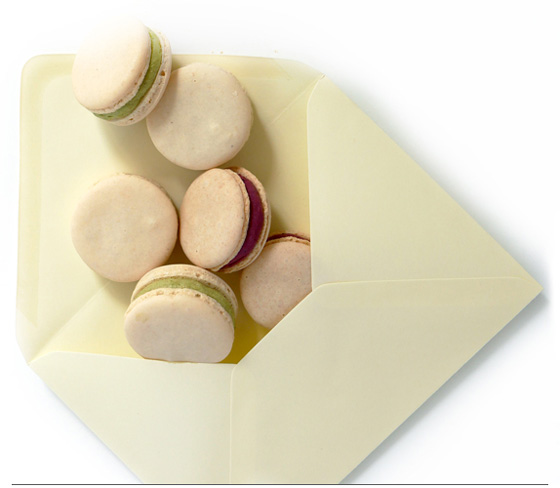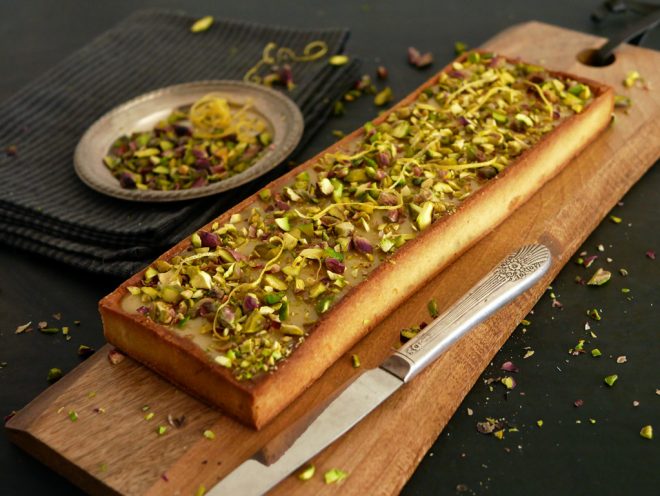Lemon Berry Tartlets
Sometimes I like to combine elements from previous posts to create something new. For this post, I used the crust I baked for the lemon-lime pistachio tartlets. I filled the crust with the lemon cream I prepared for the Crembo’s lemon core. I decorated the top with leftover raspberries and blueberries from the mousse cheesecake. And here’s what I came up with, a lemon berry tartlet.
Raspberry is one of the most common berries used in the baking world. Unfortunately, it’s considered a rarity in this part of the world, and they are so overpriced.
On my last trip to the US, I felt like I was swimming in a sea of raspberries. Every time I stepped into a grocery store I came out with a box or two of fresh raspberries in my hands. When I came back home to Jerusalem and noticed all the raspberries for sale, I went through a moment of insanity and bought myself a few boxes.. You know, because I just got used to it. Only afterwards I realized the damage I’m doing to my pocket.
Fresh raspberries in the fridge are like a ticking time bomb. They must be used as soon as possible. So what do you do when you suddenly possess a large amount of raspberries? Bake a bunch of berry-centered desserts! Over the last week I made a mousse cheesecake with berries, Crème brûlée decorated with raspberries, blueberry muffins, and even added blueberries and raspberries to my cereal bowl. Finally, for dessert, I made lemon berry tartlets. What a pleasure.
* The recipe makes 6 lemon berry tartlets.




Ingredients for lemon berry tartlets
Crust
175 g flour
20 g almond powder
65 g powdered sugar
2 g salt
Zest from 1 lemon
100 g cold butter (cut into cubes)
45 g eggs
Lemon Cream
100 g lemon juice
140 g sugar
105 g eggs
Zest from 1 lemon
175 g soft butter
Berries
120 g raspberries
60 g blueberries
Decoration
Some small mint leaves
Equipment
6 round rings, 8 cm diameter and 2.5 cm height
Crust
Put flour, almond powder, powdered sugar, salt, lemon zest and butter cubes in the mixer bowl and keep in the fridge for about 10 minutes. Remove from fridge. Using the paddle attachment, start mixing at low-medium speed until the batter reaches sand-like consistency. Make sure the butter chunks are as small as possible at the end of the process without melting the butter.
Add the eggs all at once and keep mixing at medium speed until the dough starts to form but is not yet completely uniform. Remove dough parts from the bowl and combine. Cover dough with plastic wrap. Roll out the dough a little bit, giving it a rectangular shape. Keep in the fridge for at least an hour. (It’s always better to prepare the dough in advance, the dough keeps for up to a week in the fridge and for about two-three months in the freezer.)
When the dough is stiff and cold, remove the plastic wrap and divide the dough into 6 equal-sized pieces. Leave one piece of dough on the counter top and put the rest back in the fridge. Flour the work surface, place the dough on top and dust it with flour as well. Roll out the dough with a rolling pin. Keep turning the dough throughout and make sure it doesn’t stick to the surface. Roll out the dough to a 3-4 mm thickness.
Please note (!) If at any point the dough starts to soften, put it back in the fridge until it is stiff again.
Fonçage:
Spread some butter on your finger and butter the inner side of the baking ring so that the dough sticks to it. Place the ring gently on top of the dough and cut a larger circle around the ring. Place the ring on a parchment paper and place the dough gently on top of it. Lift the edges of the dough, gently push the rest of the dough down and attach the edges to the sides of the ring, starting from the bottom of the ring to the top.
Gently press down on the sides so that the corners at the bottom form a right angle. (It’s not the end of the world if the dough gets torn accidentally. Just attach the sides that have been torn apart and move on). Go over the top of the ring with a sharp knife and remove the excess dough. Put the tartlet in the freezer and repeat the process with the rest.
Blind baking:
Prick the bottom of each crust all over with a fork and put back in the freezer.Cut parchment paper into 6 pieces, 13 x 13 cm each (approximately). Line the tartlets with the pieces of parchment. Fill the tartlets with pie weights or dry chickpeas. Keep in the freezer. Preheat the oven to 175 ºC (350 ºF). When the desired temperature is reached, remove the tartlets from the freezer and set them on a baking sheet lined with parchment paper.
Place the sheet in the oven and bake for 10 minutes. Remove the baking sheet from the oven and gently remove the parchment paper containing the pie weights (be careful not to break the crust in the process). If the bottom of the tartlets is still wet, put back in the oven and bake for another minute or two until dry. Set aside to cool.
Brush the top of each crust against a flat mesh sieve to straighten the edges and give it a cleaner, sharper look.
Lemon Cream
Put lemon juice, sugar, lemon zest and eggs in a saucepan and whisk. Start warming on medium heat, while whisking all along to prevent the egg yolk from congealing. Once it starts to bubble, remove from heat and pour the mixture through a sieve into a measuring pitcher.
As soon as the temperature reaches 50 °C (120 °F), add the soft butter (gradually but quickly) and mix well. Grind with a hand blender to a uniform consistency. Pour the cream into the crusts up to ¾ of their height. Keep in the fridge for about an hour or two to let the cream set.
Fill a pastry bag with the rest of the lemon cream and keep in the fridge as well.
Putting it all together!
Remove the tartlets from the fridge. Decorate the top with raspberries and blueberries with the raspberries’ opening facing up. Pipe lemon cream in each raspberry. Add a small mint leave on the side. Keep these lemon berry tartlets in the fridge for up to two days.

Related Posts
2 Comments
Leave a reply:Cancel reply

Search the blog
![]()
Get updates by email














Can I please ask where you bought the tartlet moulds from? I’ve been looking all over and can’t seem to find them. Thank you!
Hi Samantha,
I usually get them from specialty baking shops. I also order online from a Facebook friend who sells them for cheap and can ship them to you inside Israel. I can send you her info if you like.